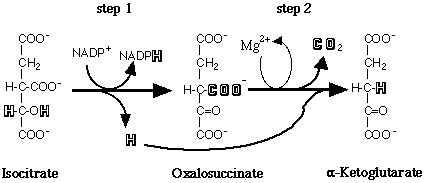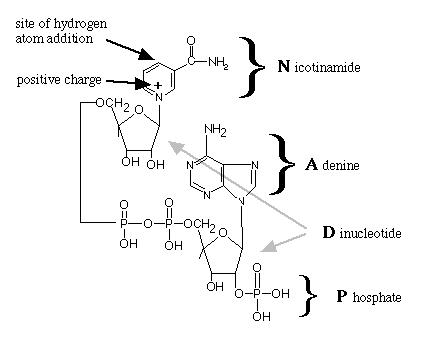|
Well
|
Buffer*
|
NADP+ or NAD+
|
Recombinant Lysate
|
Isocitrate (last)
|
|
A1
|
200
|
0
|
0
|
0
|
|
A2
|
180
|
10
|
10
|
0
|
|
A 3
|
170
|
10
|
10 NADP+-dependent enzyme
+ control
|
10
|
|
A4
|
170
|
10
|
10
|
10
|
|
A5
|
170
|
10
|
10
|
10
|
|
A6
|
170
|
10
|
10
|
10
|
*all volumes are in µL
9) As soon as you add the substrate isocitrate, put the 96 well plate in the reader and read the absorption at 340 nm every 30 seconds for 3 minutes. You can do this by using an automated program supplied to you by the instructor.
10) Collect the printout and use Excel to plot the activity of your enzyme. Once you have done this, try the other coenzyme and compare the results. You can perform both experiments at the same time if you prefer.
Here are a couple figures to help you keep in mind what is happenging in this reaction.

Figure 1. Summary of IDH reaction. Note the production of NADPH.

Figure 2. Structure of NADP+.